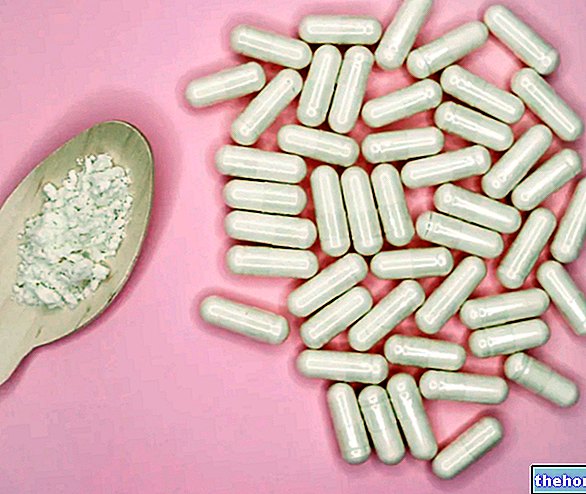
Generality
Indications
Dutasteride is a second generation inhibitor of the 5-alpha reductase enzyme because it is the first to inhibit both types (I and II) of the aforementioned enzyme.
History and registered specialties
Dutasteride was approved for the treatment of benign prostatic hyperplasia and related symptoms in 2002 by the Food and Drug Administration at the request of the pharmaceutical company GlaxoSmithKline.

Mechanism of action and Clinical Efficacy
Dutasteride, by inhibiting both types of the 5-alpha reductase enzyme, is very effective in reducing dihydrotestosterone levels, which are reduced by approximately 90%, compared to the average, within the first 2 weeks of treatment. go the level of dihydrotestosterone decreases even more, reaching 93-94% of the norm within the first year from the start of treatment with dutasteride; the level of testosterone, its precursor, can instead increase up to 20%, again compared to the average, during treatment with dutasteride. Doctors confirm that the increase in testosterone concentration is not to be considered worrying. Even if months have to pass to fully benefit from the results of the treatment, the efficacy of dutasteride means that there is a noticeable reduction in the volume of the prostate already. after the first month of treatment; the decrease in prostate volume will continue for up to two years from the start of drug therapy.
The efficacy of dutasteride was also demonstrated by a study involving a one-year treatment of two groups of patients: one with the drug, the other with placebo; the group of patients treated with dutasteride showed - after one year - an average reduction in the volume of the prostate of about 24%, while in the group treated with placebo this percentage reached only 0.5%. The reduction in prostate volume during dutasteride treatment continues for up to two years after the start of treatment.
In another, even more comprehensive study, which included more than 4,000 patients with moderate to severe benign prostatic hyperplasia, again divided into two groups, the most important parameters of clinical efficacy were measured: maximum urinary flow, el "incidence of urinary retention and surgery related to benign prostatic hyperplasia." This study found that patients receiving dutasteride, after 6 months, considered treatment to be adequate; after 1 year or more the positive evaluation of the treatment was increasing. Two years after the start of the study, urine flow in the dutasteride-treated group was significantly better than in placebo-treated patients. The incidence of urinary retention also improved during treatment: if in patients treated with placebo, this incidence was greater than 4%, in dutasteride-treated patients it was 1.8%, ie less than half. The same thing applies to the incidence of surgical interventions: in dutasteride-treated patients the possibility surgery decreases by about 50%.
Dutasteride and Androgenetic Alopecia
As for the use of dutasteride in the treatment of androgenetic alopecia, not much information is yet available. After carrying out the phase I and II studies on the use of dutasteride against hair loss, the pharmaceutical company GlaxoSmithKline in 2002 inadvertently and without giving explanations stopped the pharmaceutical trials.
Phase III studies resumed in 2006 with a six-month study, performed in Korea, which tested the tolerability, safety and efficacy of the drug used for the treatment of androgenetic alopecia in the same doses that are used for the treatment of "benign prostatic hyperplasia. Phase III studies were concluded in 2009, showing that dutasteride, by lowering the level of dihydrotestosterone, is a very effective drug in the treatment of androgenetic alopecia. Despite this, the pharmaceutical company GlaxoSmithKline has not yet applied for approval for the marketing of dutasteride against androgenetic alopecia.
Dutasteride and Thyroid
An in-depth study lasting one year was carried out to ascertain the effects of dutasteride on thyroid function. At the end of this study it was observed that thyroxine levels, during dutasteride administration, remained unchanged, while TSH levels were slightly increased, however remaining within normal levels. Therefore, in conclusion, it has been confirmed that taking dutasteride does not cause any significant change in thyroid function.
Dutasteride and Male Fertility
Another study concerning the effects of dutasteride on male fertility was carried out on a group of healthy volunteers aged between 18 and 52 years. The study duration was one year and the post-treatment follow-up period was 6 months. At the end of dutasteride treatment (after one year) the mean percentages of total sperm count, semen volume and total sperm motility were measured; the values obtained were about 20% lower than the baseline values for all three characteristics. However, it must be emphasized that these values, even if reduced compared to the average basal values, are still included in the normal range. Only two individuals who participated in the study, at the end of treatment with dutasteride had a decrease in sperm counts of about 90% from baseline, then partially recovered after the six months of control. Therefore, even if studies show that dutasteride does not cause adverse effects on male fertility, the possibility cannot be totally excluded that following treatment with this drug some individuals may experience impaired fertility.
Dosage and method of use
The recommended dose of dutasteride in the treatment of benign prostatic hypertrophy is 0.5 mg / day, to be taken in a single daily administration. Dutasteride capsules can be taken before or after meals. Since dutasteride comes in the form of soft gelatin capsules, containing the active ingredient in liquid form, they must be swallowed whole and must not be chewed, broken or opened; if the contents of the capsule come into contact with the oropharyngeal mucosa it can cause irritation of the same.
For the treatment of androgenetic alopecia there is not much information on the recommended dose of dutasteride to use, although the manufacturer, GlaxoSmithKline, claims that the same dose that is used in the treatment of benign prostatic hyperplasia should be used. However, there are people who use dutasteride for the treatment of androgenetic alopecia, often without doctor's supervision, taking 0.5 mg of the drug, once a day or two or three times a week.
Dutasteride: side effects and contraindications "




























